Maxxis Shorty (Gen 1) Tires
(discontinued)
| Where To Buy | |||
|---|---|---|---|
Free shipping on orders over $50 (continental U.S. only).
International shipping available. Some exclusions apply. |
|||
Free shipping on orders over $50 (continental U.S. only).
International shipping available. Some exclusions apply. |
|||
Review by A.J. Barlas // Photography Jon Anthony & A.J. Barlas
Inside of most mountain bikers is a little kid that loves dirt bikes. Some of these little inside kids even get lucky enough to ride one, while others watch in amazement, taking some of what they see into their riding approach - at the very least letting out the occasional 'braaap' while ripping a fun trail.
We definitely have this little kid in us, from the attempted whips and scrubs all the way through to the sound effects out in the woods. So when the new Maxxis Shorty tire showed up the little guy started 'brapping' with enthusiasm thanks to what was apparently a slimmed-down moto tread that we now held in our hands.
The Shorty is a brand new tread design from the folks at Maxxis that features an aggressive, square block knob pattern throughout, 2-ply downhill casing and Maxxis' 3C MaxGrip compound. It's designed with loam, medium mud, or deep soft dust in mind, and with each of those being a favourite of ours to rally through, we eagerly mounted up a pair and set out to see just how moto things could get.

Maxxis Shorty Highlights
- Available in 26" x 2.40" (61-559 ETRTO - European Measurement)
- Wire bead
- 3C MAXX GRIP Compound
- High-Volume, Dual-Ply Downhill with Butyl Insert, Black, 60 TPI, 65 Max PSI sidewalls
- 2 lb 10.9 oz (1.2 kg)
- MSRP: $87 USD
Initial Impressions
The Shorty features a lot of the usual Maxxis downhill tire traits; solid two ply construction with a great, soft tread and a 'channel' between the center and cornering knobs (though not as clear here as in some of their other offerings). The big square blocks are soft and there is a substantial amount of space between them, allowing the tire to shed any material that may cling to a regular tread. They are aggressive and just looking at them had us giggling like school girls. With too much excitement to contain, we began setting them up on our downhill bike.
The Shorty's mounted quite easily with tubes, though not so easily tubeless with difficulties obtaining a good seal. No biggie here though, given that the tires we tested were not tubeless specific. We were able to set them up tubeless on a different set of wheels later in the test, with no issues. With the tires mounted and the downhill bike now looking like a total monster, we headed out to the trails.

On The Trail
With the Shorty's cut spike tread designed for deep loam, slight mud and even deep dusty conditions, we decided to build a new, short loamer line to really test them out. The trail was totally raw, with just the bare essentials removed from the surface, leaving behind a thick layer of duff and moss. A series of lips into hardly supported corners, some flat corners and a completely off-camber corner gave us a little of everything to see how they would perform.
Given the loam conditions we could have had a good time on just about any tire, but the ability to rail in it would without a doubt be compromised with a lesser tread. From the first run, the Shorty was nothing but inspiring, gripping like velcro in the damp loam, leaving a trail of roost slinging high into the treeline as we fell down the hillside and Jon, who was shooting photos, screaming with excitement as the dirt flew. When the trail wore in the tire continued to grip, and we pushed it more and more in an effort to see how much it could handle. Flat corners began to show large roots, but they went unnoticed other than while hiking back up, as the soft tread of the Shorty took it all in its stride.

We spent a good amount of time in a variety of conditions on the freshly built trail, from damp, to wet and then bone dry, as well as on older trails in close proximity to the new line - the Shorty performed exceptionally well in all these situations. In an attempt to really round out the test, and despite them not being specifically designed for loose over hardpack, we spent the remainder of the test blasting them around the Whistler Bike Park.
Initial rides in the park resulted in similar impressions as the soft rubber compound produced amazing traction on the damp rock slabs of the park. Conditions in the park were damp during these first few days, producing hero dirt conditions and as a result, plenty of grip on most tires. What we did notice was that the cut spike knobs of the Shorty were short enough that the tire wasn't too squirmy under these distinctly heroic conditions.

Since those early days the conditions in Whistler have significantly dried out, resulting in the classic "Whistler Bowling Alley's" return. The fine dust over hardpack conditions shone a light on the tire's first weakness, with the big square blocks unable to grip the surface in the same way as those with more siping do. The Shorty's still rode well, but left us a little more on our toes with them losing traction and breaking into some unexpected drifts.The soft rubber combined with the large square blocks also resulted in some noticeably slower acceleration in these hardpack conditions, but we were admittedly well out of the tire's intended use by now.
The tires have also really begun to show signs of wear after roughly 40 laps in the park, especially once the conditions dried out. There are some interesting elements to the wear, with what appears to be the knobs tearing directionally down the tire. A lot of tires will start to show wear after this amount of riding in Whistler, though in our experience, not quite as much as these have at this point. There is still loads of life in them, but the tearing we are experiencing is something we've not seen so consistently in a tire before. We wonder if they were to be ridden exclusively in the conditions they're designed for, if they would wear in this same fashion.

Long Term Durability
In the conditions that the Maxxis Shorty was designed to excel in, they should last a rider a good amount of time, possibly even a couple of seasons depending on the amount of use outside of their intended purpose. If, however, you're a fit-and-forget rider who plans to put tires on the bike and then 'run what you brung' including on hardpack surfaces, expect to see them wear down a little quicker than say, a Maxxis Minion would.
Things That Could Be Improved
We haven't experienced a lot of issues with the Shorty's and have thoroughly enjoyed riding them. However, it would be great to have a tubeless ready version available and we would love to run a set in a lighter version on our trail bike through the winter. Perhaps these options aren't too far off…

What's The Bottom Line?
For its intended purpose and conditions the Maxxis Shorty is a no brainer, allowing riders to get away with murder on the trail and ride out of some ridiculous lines with confidence. They're not the greatest in loose over hardpack, but this is not what they were intended for in the first place. If you're a park rider in Whistler or have similarly loose dust and hardpack conditions, there are more suitable options out there, but if you ride loam, muck or softer dirt, or if you race and need a cut spike, we highly recommend these tires for your collection. They will inspire confidence and see you push loose corners to new speeds and induce loads of sound-effects on your way down the trail!
For more on the Maxxis Shorty be sure to check out www.maxxis.com.
About The Reviewer
AJ Barlas started riding as most do, bashing about dirt mounds and popping off street curbs. Not much has changed, really. These days the dirt mounds have become mountains and the street curbs, while still getting sessioned, are more often features on the trail. He began as a shop monkey racing downhill since day zero, only to go 'backwards' and start riding and racing BMX later on. He then came full circle once moving to Whistler. AJ loves riding everything from 8 hour mountain pass epics (bonking) to lap after lap in the park and 20 minute pumptrack sessions at sunset. Driven by his passion for biking and exposing people to the great equipment we ride, AJ started and maintains the Straightshot MTB blog. So long as wheels are involved, and preferably dirt (the drier and dustier the better), life is good.
3 member reviews
- Surprisingly good rolling resistance
- Maxxis never the most cost effective option
A mid spike tyre that rolls like a high roller...
Usually I stick to a trusty set of High Rollers all year round, however this winter I thought I'd crack on and put a pair of Shorty's on once the inevitable winter mud arrived. The Yorkshire Dales is plenty wet enough this time of year and due to barely riding hard pack trail centres I thought I would bite the bullet and sacrifice any sort of rolling speed for a bit more grip when things got pointing up or down.
First ride was an uplift session on a perfect shorty local dh track - minimal rocks, lots of sloppy peat and mud. Chuffed to bits with how much grip the tyre provided over a High Roller, and how consistent it felt when leaning the bike over. I think this is due to the really good mud shedding ability of the tyre, with the knob spacing and depth meaning that it cleans itself up nicely each revolution (mudguards and goggles advised!).
However, the key thing that has impressed me with the tyre is not it's outright wet weather performance, but it's capability as an all rounder. For a tyre design as specific as this, the lack of rolling resistance, and grip offered up when on harder pack trail centre stuff is really surprising. In the 800gram range the 650 option is by no means a heavy tyre (lighter than a high roller or a minion), but you just don't expect a tyre with this kind of spike tread to be able to perform so well on conditions it clearly wasn't designed for. The only area it maybe struggles in is really high speed berms where you do notice the knobs squirming around under a lot of load.
Wear has been impressive. 3 months in and the front is pretty much as new. Rear has lost some of its edge but I haven't noticed performance wane, and nothing has ripped or torn. Puncture free also.
For me the shorty is the first mud tyre I've ridden that I would be happy to keep on all winter, rain or shine.
0 comments
Post a reply to: Maxxis Shorty
Durability
Predictability
Lifespan
- Dry and hardpack (not billed for this obviously)
For 29ers
- No Super Tacky Option
- No Maxx Grip Option
- No Double Down Casing Option
- No 2.5 width option
First use of the Shorty was on the DH bike. These tires got their first run in the loose sandy wet dirt at Massanutten. They bite deep and hold corners but do not feel squirmy on the rocks/roots. In the peanut butter at Snowshoe these tires do a decent job of clearing mud as well. For loam or moon dust conditions is where these tires really excel. Often used minions or HR2's in loam but the Shorty inspires more confidence and braking, especially when it gets steep such as Thunder Mountain. Only weakness as a dh mud tire would be the tracks where there are lots of wide open grassy turns and when its extra sloppy, a full spike will serve better then. When they loose their edge as a good loam/mud tire they are perfectly happy being a beater dry rear tire to get some extra life out of em. 5/5 rating
Only used as a front tire on the trail bike. Great traction in the loam when it's dry or when there's a little moisture but not muddy. Maxxis dropped the ball with only offering the maxx Terra compound, the burly 2.5 option, and no double down casing. Riders in really rough terrain or places that there's a good bit of moisture (WV winters and springs) will be waiting super tacky compound, and the double down casing. 4/5 rating
0 comments
Post a reply to: Maxxis Shorty 29 exo (Max terra) and 27.5 dh casing (Super Tacky
best tire for loose riding conditions, and even when it gets more hardpack ,it's way better than a magic mary witch the knobs fold a lot
0 comments
Post a reply to: maxxis shorty
Specifications
Wide trail (WT) casing is optimized for 30-35mm inner width rims
65 max PSI with wire bead
Generation 1 Shorty
3C MaxxGrip compound - uses the softest rubber compounds to offer grip and slow rebound properties for traction in downhill applications.
Super Tacky compound - a low-rebound, high-traction compound.
Butyl Insert - an extra piece of butyl rubber extending from the bead up into the sidewall helping prevent pinch flats, protecting the rim from hard hits, and adding sidewall stability.
For additional info, visit the Maxxis Website.
| Where To Buy | |||
|---|---|---|---|
Free shipping on orders over $50 (continental U.S. only).
International shipping available. Some exclusions apply. |
|||
Free shipping on orders over $50 (continental U.S. only).
International shipping available. Some exclusions apply. |
|||








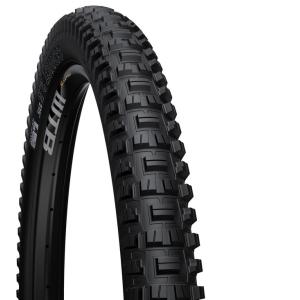
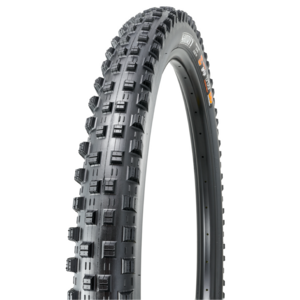
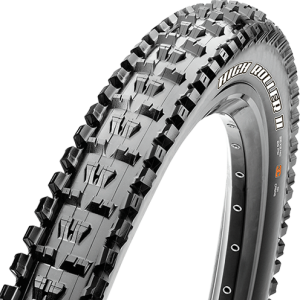


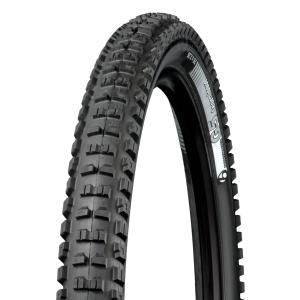
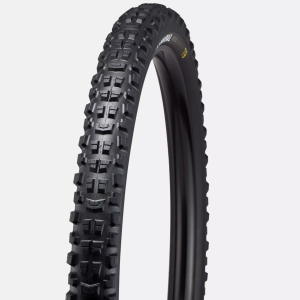
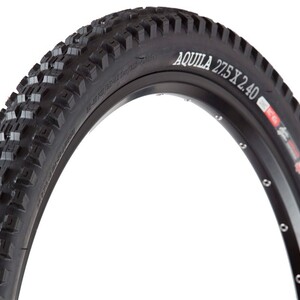






2 comments
Post a reply to: Tested: Maxxis Shorty Tire